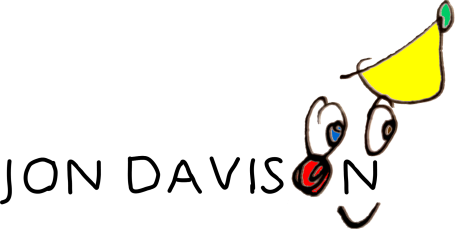
Clown Prosthetics and Amputations
A one-year research project into how clowns use the adding and subtracting of body parts in performance. This project was funded by a scholarship for the MA in Practice as Research at Kent University in 2006, but its impact continue to be felt in the form of "Odd Bod".
Clown Arms
Jon Davison performs his Arms Number at the Cochrane Theatre Cabaret, London. The song is by Alik Kopyt from Odessa.
Three-Legged Clown
Jon Davison performs his Clown Three-Legged Dance at Mme. Jojo's in Soho, London.
Three-Legged Hornpipe
A new version of my three-legged dance, accompanied here by John Dickson of Camden Clog on melodeon with the 'Trumpet Hornpipe', at Thrales Rapper Day in the Prince William Henry, Blackfriars, London, 11/11/13.
What happens when the body multiplies, when it subtracts, and when it disappears? Can the performer keep doing his job without a body? A series of clown numbers investigating presence, absence and fooling the audience, that hopes to raise the question of whether actor presence is just another illusion, no more sophisticated than a game of peek-a-boo.
Sources and inspirations include: classic clown circus and vaudeville numbers, contemporary clown, Shakespeare's The Tempest, Titus Andronicus and Hamlet, Brecht's Man Equals Man and The Baden-Baden Lesson on Consent, Beckett's Not I and Happy Days, sketches by Nikolai Erdman, and others.
All pieces created and performed by Jon Davison, with directorial assistance from: Danny Schlesinger, Clara Cenoz, Paz Corral and Mercè Solé. Many thanks to Olly Double and Paul Allain.
***
What I’m really interested in is what kinds of performing I feel are possible or necessary under a variety of very specific physical circumstances. In the case of this show I decided that those circumstances would be either adding bits to my body (prosthetics) or taking away bits from my body (amputations). In all cases these are temporary, illusory or tricks. Any kind of performer can do this and the results would fall within their genre of performance, which in my case is clown.
The history of clowning has numerous examples of this practice, some of which I have recreated or been inspired to work with for this show. It has always been common practice for clowns to play with their bodies in some way. Working on these pieces I have discovered how this particular way of reshaping and unbalancing my body gives rise to particular performance choices. Those choices may be about form: for example, is it a dance, a song, silent or spoken? Or the choices may be about whether the drive for the performance is provided by physical activity, dramatic activity or emotional activity.
This then led me to wonder if some kind of unbalancing is fundamental to all performance. But then clowns are notoriously unbalanced in many ways.
As well as pieces clearly aiming to address these questions directly, I have included some that might seem like cheating or just joking. But as a clown intellectual I would defend the right of “not taking things seriously” to be treated with equal seriousness as its weightier cousin, “taking things seriously”. I hope you will find satisfactory my solution to invisible performing, for example.
I was also interested in presenting these pieces, as they seem to be out of synch with the times: they do NOT assert the authenticity of the personal body as the identity of the person. On the contrary, they find heightened presence (authenticity?) in gross misrepresentations of the body. But then clowns are used to finding success in failure, and presence in our failure to be fully present.
Paradoxically, then, I am working with my body to convince you that my presence doesn’t depend on my body.
